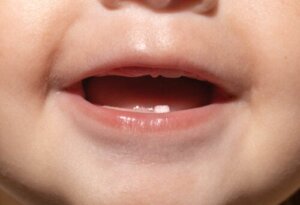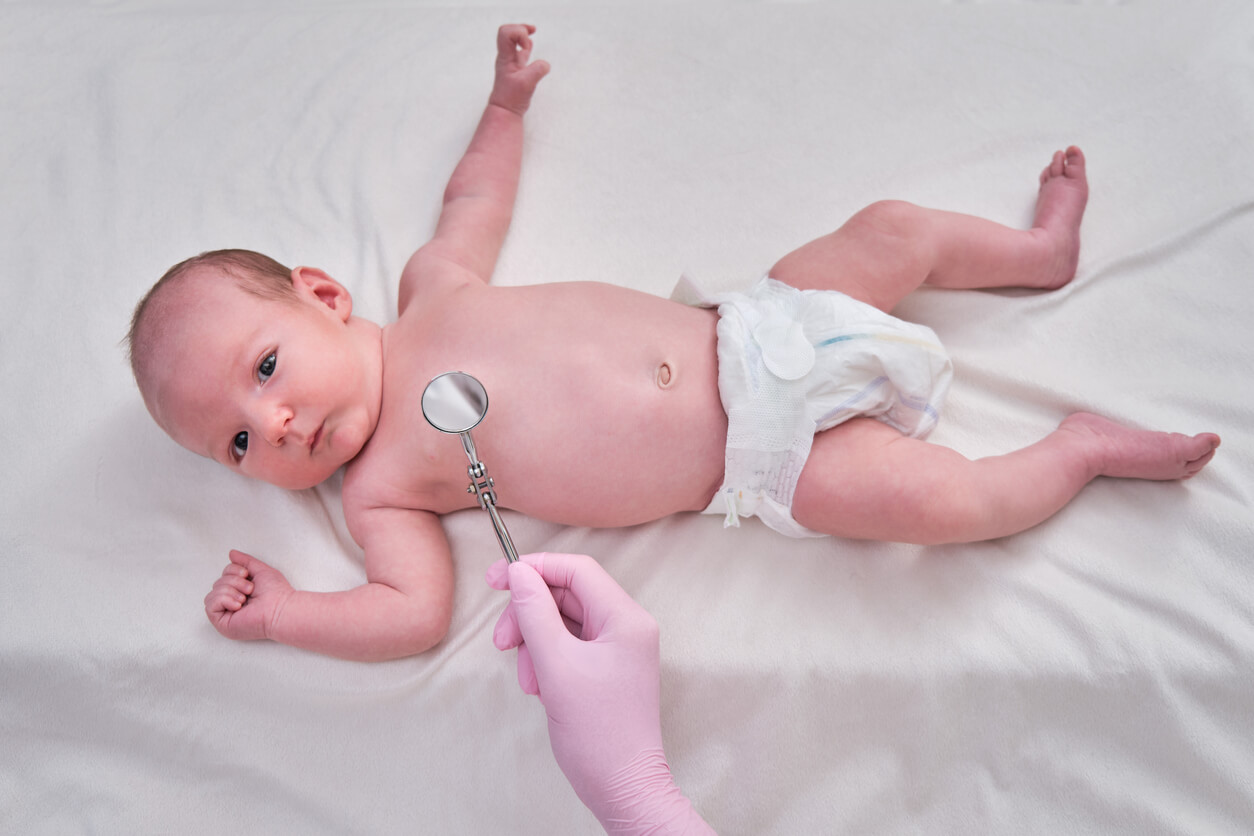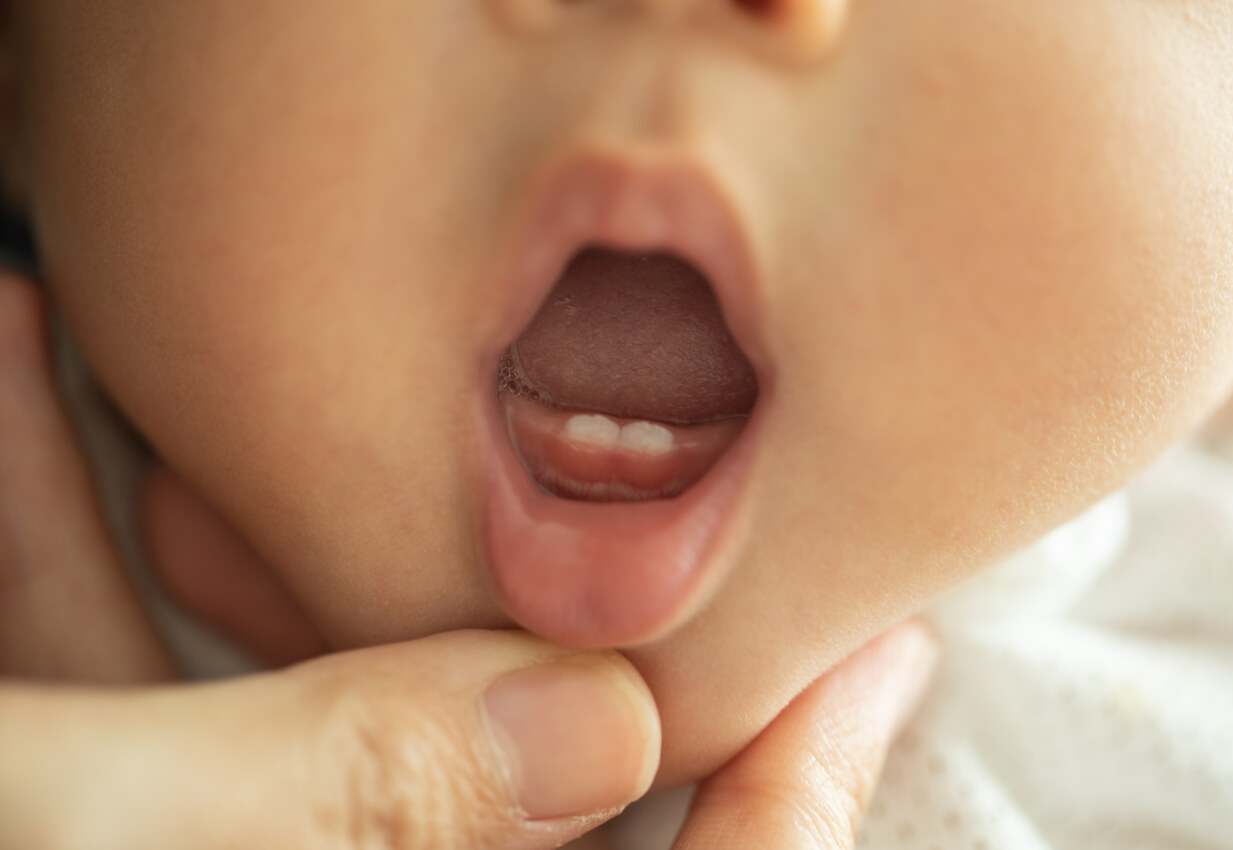Your Child's First Dentist Appointment: What to Expect


Written and verified by the dentist Vanesa Evangelina Buffa
Your child’s first dentist appointment can generate a lot of doubts and uncertainty among parents. But when is the right time to take your child to the dentist? What’s going to be done? And is it really necessary if there’s no problem? In this article, we’ll tell you everything you need to know.
The American Dental Association (ADA) recommends taking babies to the dentist when the first tooth appears in the mouth and before the age of 12 months. Early dental visits help parents take care of their little one’s teeth while avoiding future complications. You shouldn’t worry about the experience, as checkups for babies are different from those for adults.
Your child’s first dentist appointment
The first visit to the pediatric dentist is recommended when the baby’s teeth have begun to erupt and no later than one year of age. Early approaches help to control the development of the mouth and prevent complications. The main objective is for the family and the child to meet the professional and vice versa. This encounter lasts between 30 and 40 minutes.
For their part, adults should take the opportunity to clear up any doubts about their child’s mouth. Let’s take a closer look at the main moments that will make up your child’s first dentist appointment.

Introduction and family interview
The pediatric dentist will first introduce themself and welcome the family and the child. Then they’ll talk to the parents about the baby’s health, habits, and family customs. This will be recorded in the child’s medical history.
Some of the following topics will be included in this dialogue:
- Gestation of the child: Problems during pregnancy or childbirth
- Breastfeeding and type of feeding
- Illnesses in the first months of life
- Health or growth and development issues
- If the child takes any type of medication
- Use of a pacifier or bottle
- Thumb sucking habits
- Oral problems of the parents
Clinical examination
After having dialogued with the family, the professional will invite one of the parents to sit in the dental chair with their baby in their arms. At this time, the dentist will examine the baby’s mouth.
The clinical examination will evaluate the condition of the gums, tongue, lingual frenulum, palate, and other mucous membranes. Also, any teeth that have already erupted will be observed and the eruptive process and the growth of the jaws will be analyzed. In specific cases, the pediatric dentist may suggest complementing the diagnosis by taking photographs and X-rays. In addition, if any problems are noted, the appropriate approach can be planned.
Advice given during your child’s first dentist appointment
Before the family leaves, the pediatric dentist will take advantage of the first visit to provide information and education on the care needed to keep the baby’s mouth healthy. Therefore, the professional will include information on the following topics:
- Baby bottle tooth decay and how to prevent it
- Oral hygiene: how to clean the baby’s mouth and how much fluoride toothpaste to use
- Infant feeding and dental health: Which foods and beverages are harmful to dental health and how to replace them
- Teething: What to expect and how to relieve discomfort
- Pacifier use and finger sucking
- Tooth trauma: Prevention and how to act
- Fluoride: its benefits and how to use it

The frequency of visits to the pediatric dentist
At the end of your child’s first dentist appointment, the professional will invite the family to schedule the next check-up. The frequency of visits is determined according to the child’s risk of oral diseases. In general, check-ups are performed every 6 months, although they may be sooner if the case warrants it. For example, if the child has a high risk of cavities or gingivitis, checkups will be every 3 or 4 months.
Some dentists schedule more frequent visits to build trust and familiarity with the child. Frequent visits to the dentist’s office help the child feel comfortable and at ease. In addition, if the pediatric dentist detects a problem that requires treatment, the necessary intervention will be explained to the parents. Depending on the complexity and possibilities of the child, the approach will be planned.
Your child’s first dentist appointment is key
The first visit to the pediatric dentist is the beginning of a relationship that will last throughout your little one’s childhood. Go to this meeting calmly and with confidence. The professional will know how to treat your baby and will help you with oral health care.
Your child’s first dentist appointment can generate a lot of doubts and uncertainty among parents. But when is the right time to take your child to the dentist? What’s going to be done? And is it really necessary if there’s no problem? In this article, we’ll tell you everything you need to know.
The American Dental Association (ADA) recommends taking babies to the dentist when the first tooth appears in the mouth and before the age of 12 months. Early dental visits help parents take care of their little one’s teeth while avoiding future complications. You shouldn’t worry about the experience, as checkups for babies are different from those for adults.
Your child’s first dentist appointment
The first visit to the pediatric dentist is recommended when the baby’s teeth have begun to erupt and no later than one year of age. Early approaches help to control the development of the mouth and prevent complications. The main objective is for the family and the child to meet the professional and vice versa. This encounter lasts between 30 and 40 minutes.
For their part, adults should take the opportunity to clear up any doubts about their child’s mouth. Let’s take a closer look at the main moments that will make up your child’s first dentist appointment.

Introduction and family interview
The pediatric dentist will first introduce themself and welcome the family and the child. Then they’ll talk to the parents about the baby’s health, habits, and family customs. This will be recorded in the child’s medical history.
Some of the following topics will be included in this dialogue:
- Gestation of the child: Problems during pregnancy or childbirth
- Breastfeeding and type of feeding
- Illnesses in the first months of life
- Health or growth and development issues
- If the child takes any type of medication
- Use of a pacifier or bottle
- Thumb sucking habits
- Oral problems of the parents
Clinical examination
After having dialogued with the family, the professional will invite one of the parents to sit in the dental chair with their baby in their arms. At this time, the dentist will examine the baby’s mouth.
The clinical examination will evaluate the condition of the gums, tongue, lingual frenulum, palate, and other mucous membranes. Also, any teeth that have already erupted will be observed and the eruptive process and the growth of the jaws will be analyzed. In specific cases, the pediatric dentist may suggest complementing the diagnosis by taking photographs and X-rays. In addition, if any problems are noted, the appropriate approach can be planned.
Advice given during your child’s first dentist appointment
Before the family leaves, the pediatric dentist will take advantage of the first visit to provide information and education on the care needed to keep the baby’s mouth healthy. Therefore, the professional will include information on the following topics:
- Baby bottle tooth decay and how to prevent it
- Oral hygiene: how to clean the baby’s mouth and how much fluoride toothpaste to use
- Infant feeding and dental health: Which foods and beverages are harmful to dental health and how to replace them
- Teething: What to expect and how to relieve discomfort
- Pacifier use and finger sucking
- Tooth trauma: Prevention and how to act
- Fluoride: its benefits and how to use it

The frequency of visits to the pediatric dentist
At the end of your child’s first dentist appointment, the professional will invite the family to schedule the next check-up. The frequency of visits is determined according to the child’s risk of oral diseases. In general, check-ups are performed every 6 months, although they may be sooner if the case warrants it. For example, if the child has a high risk of cavities or gingivitis, checkups will be every 3 or 4 months.
Some dentists schedule more frequent visits to build trust and familiarity with the child. Frequent visits to the dentist’s office help the child feel comfortable and at ease. In addition, if the pediatric dentist detects a problem that requires treatment, the necessary intervention will be explained to the parents. Depending on the complexity and possibilities of the child, the approach will be planned.
Your child’s first dentist appointment is key
The first visit to the pediatric dentist is the beginning of a relationship that will last throughout your little one’s childhood. Go to this meeting calmly and with confidence. The professional will know how to treat your baby and will help you with oral health care.
All cited sources were thoroughly reviewed by our team to ensure their quality, reliability, currency, and validity. The bibliography of this article was considered reliable and of academic or scientific accuracy.
- González-Pérez, V., Pérez-Pérez, M., & Herrera-Camacho, J. (2019). 33. PROTOCOLO DE PRIMER VISITA AL ODONTOPEDIATRA EN NIÑOS MENORES DE SEIS MESES. Revista de la Academia Mexicana de Odontología Pediátrica, 31(S1), 17-18.
- Farré, E., Cuadros, C., Lorente, A. I., Sáez Martínez, S., & Bellet, L. J. (2010). La primera visita al odontopediatra. Dentum (Barc.), 97-101.
- Sánchez García, M. N. (2021). SALUD BUCAL Y ENFOQUE DE LA ATENCIÓN ODONTOLÓGICA EN BEBES.
- Rodela Martínez, T. L. (2022). Protocolo de atención dental para disminuir la ansiedad en odontopediatría (Doctoral dissertation, Universidad Autónoma de Nuevo León).
- Llumipanta, J. J. P., Villamarín, S. M. G., Moreta, J. F. A., & Neira, A. G. M. (2022). La educación bucodental a través de la evaluación de visitas odontopediátricas en niños desde el nacimiento hasta los 8 años de edad. Dilemas contemporáneos: Educación, Política y Valores.
- López de Francisco, M. D. M. (2021). Factores familiares y sociodemográficos en niños de manejo de comportamiento en odontopediatría.
- Caro, A. A. S. (2020). Manejo de conducta de los niños durante la atención dental. Salud & Vida Sipanense, 7(1), 69-80.
- Gil, A. M. C. Revisión Bibliográfica “Manejo psicológico del niño en la atención estomatológica.”. población, 3, 5.
This text is provided for informational purposes only and does not replace consultation with a professional. If in doubt, consult your specialist.








